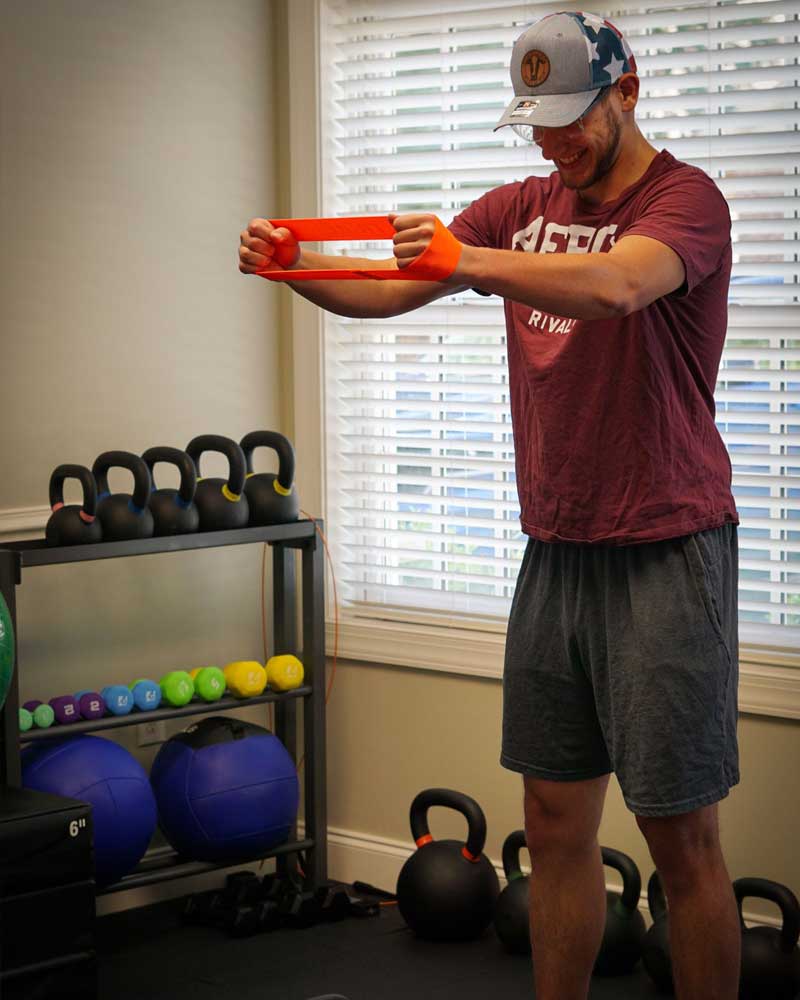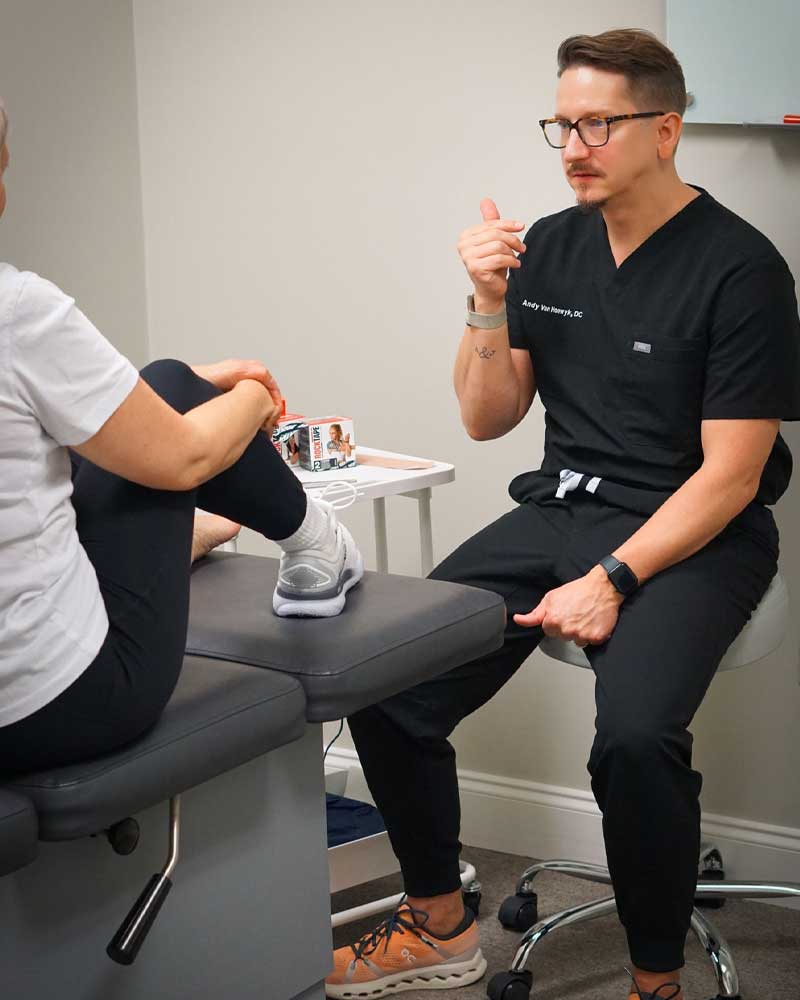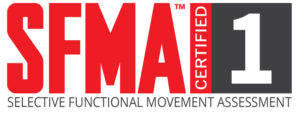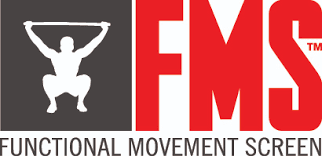Exactly as the name says, movement assessments are a blend of exercise and movement sciences. Combining motor control, motor learning, musculoskeletal physiology, and the study of human movement, movement assessments analyze what muscles are recruited and impacted during a variety of activities and movements to unearth postural issues and imbalances. This information is utilized to help improve muscle balance, strength, and muscle memory using targeted exercises and stretches.
Much like our brains, muscles contain memory. Any person can relate to having both good and bad memories, and muscles act the same way, with certain muscles compensating, underperforming, or overworking. With time, these muscles become tight or inflexible. They may cramp easily or fatigue easily with physical activity. Muscles respond by aching, experiencing burning sensations, feeling stiff, becoming inflexible (imagine bending over to touch your toes right now without bending the knees!), or other sensations.
What’s the result? A combination of tight, weak, lengthened, and inflexible muscles create deviations from healthy movement, and enough compensations can put a person at greater risk for developing injury without even realizing it. A common example is when someone’s back “goes out” just from bending over like picking up a fallen pencil or hairbrush off the floor.
Certain muscles are more responsible for actions and activities than others. For example, our gluteus (buttocks) muscles are responsible for hip extension or extending the leg backwards. If the hip is kept in a position where the leg stays flexed forward, such as with long periods of sitting, then the gluteus muscles learn over time that active extension doesn’t happen often; therefore, a memory develops that they don’t need to work heavily or intensely often.
In many ways, this makes our bodies efficient. But human bodies are not designed for prolonged postures or long-term muscle compensation patterns. The human body is designed for movement, and errors in muscle activation and relaxation are not productive long-term responses. Losing the ability to recruit a muscle with precision and purpose increases the chance for degeneration and injury. At the same time, muscles that are working in different ways than their intended purpose can also be at greater risk for degeneration and injury.
Thankfully, this is where a movement assessment can give the most beneficial information for what specific and individualized treatment plan would work best for you.



The steps of a movement assessment
Performing an assessment of movement requires exactly that: movement! The process to assess muscle involvement and posture for compensatory patterns involves a combination of both static posture and active loading of muscles and joints.
During a movement assessment, a patient is given a certain activity or activities to perform. This may involve performing a squat, standing on one leg, walking around barefoot, lifting something overhead, or other exercises and maneuvers to identify musculoskeletal patterns that are less than ideal.
Exercises utilized during a movement assessment are not chosen at random. Certain muscles function to engage the body in certain ways more than others. Understanding muscle function and understanding your symptoms is invaluable.
Certain muscles are primary movers of an area of the body with other muscles acting to facilitate the action. Every motion, whether it’s running, jumping, hula hooping, jumping on a trampoline, or going for a swim, rely on a cohesive relationship of muscles that contract and tighten while other muscles simultaneously lengthen and elongate, with one or a few muscles leading the way as others follow.
If the primary mover for an action is tight, then it needs to be stretched. And if the antagonist muscle to the primary mover for the action is weak, then it needs to be strengthened. Without addressing both components, a patient is prone to developing injuries in the future, sometimes repeatedly. Focusing on one muscle’s recovery isn’t enough; a well-trained doctor knows to focus on both the agonist (primary mover) and its respective antagonist muscle (opposing muscle activation) to any activity.
After taking a comprehensive history, you may be asked to engage in certain activities that may cause some minor discomfort. It is important to discuss what you experience with your doctor as you perform the movement screen to best identify what your injury is, where it’s coming from, to what extent is an area injured, and what are the best treatment options available. A movement assessment provides a foundation for a specific program to help a patient meet their movement goals and keep their muscles, joints, tendons, and bones healthy.
Who is trained to provide movement assessments?
Some chiropractors, physical therapists, healthcare professionals, and fitness and exercise specialists take additional courses in screening human movement and functional movement assessments to provide this top-notch care. The exercises and stretches in a mobility and stability muscle program are targeted specifically for your body to help improve both muscle function, muscle balance, and muscle strengthening. And chiropractors are specialists in this area being doctors of movement of the joints, muscles, tendons, and human spine!
Best of all, the entire process only takes a few minutes to complete.
Who benefits from movement assessments?
Everyone can participate in a functional movement screen! Everyone can benefit from a movement assessment regardless of age, injury, occupation, and health status. Because movement is a key to good health, movement assessments are for more than just for enhancing gym routines and workouts. These assessments provide data to help guide and monitor a treatment plan specifically for you and your body’s patterns of movement. It is important to look at patterns of mobility, stability, flexibility, and weakness to help patients do what they enjoy and not injure themselves or wind up back in pain.
You’re in the right hands at our office. Our Doctor of Chiropractic is well-versed in performing movement assessments and knows how to implement stability, mobility, and exercises in a way that benefits you and your care. Do you have questions about movement assessments or other forms of appointments we offer? We would be happy to chat over the phone or even schedule a consultation to discuss what’s the right approach for your condition and care. Give us a call!



